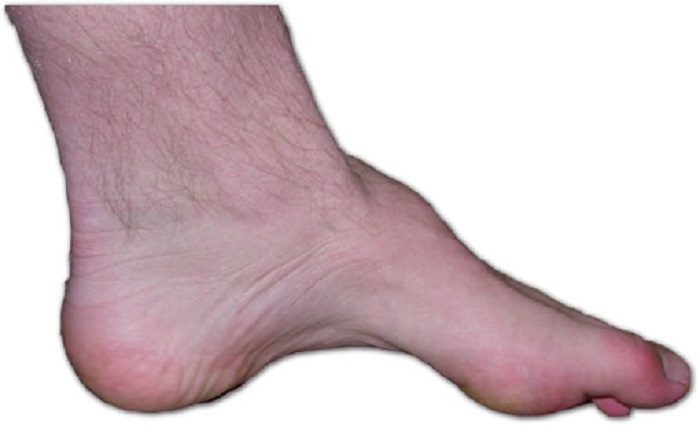It is very probable that a non-medical reader, coming across this title, would not be further interested. Charcot was a famous neurologist in France, Marie one of his students, and Tooth was an English neurologist. They were the first physicians to observe a disease pattern that reappeared from time to time in their experience. Because the cause was unknown, their names were used to document the disease in medical texts. This post is being written to describe its complex genetic mechanisms that are coupled with thiamine metabolism and the fact that it is the most common inherited neuromuscular disorder.
Symptoms of Charcot Marie Tooth Disease
Symptoms commonly begin in childhood or early adulthood, although they may appear much later. Muscle degeneration in hands and legs appears together with a burning sensation in feet and hands. There is decreased sensation in the feet and hands and an awkward gait that is observed in the patient. Abnormal curvature of the spine, known as scoliosis appears and there is increased clumsiness and tripping.
Prevalence data from the general population is lacking. At present 47 hereditary neuropathy genes are known to be involved and it has been estimated that 30-50 genes are yet to be identified. However, in 2018, it was shown that deficiency of a single gene (DHTKD1) in mice caused them to develop the symptoms of the disease.
DHTKD1 and Thiamine
Maintaining the functional integrity of mitochondria, the energy producing organelles in cells, is crucial for cell function. Mitochondrial dysfunctions may alter energy metabolism and in many cases are associated with neurological disease. Although the function of DHTKD1 in the mitochondria remains unknown, it has been reported that there is a strong correlation with ATP production, the currency of energy metabolism. Genetically determined suppression of DHTKD1 leads to Impaired mitochondrial biogenesis and increased reactive oxygen species. In simple language, energy production is impaired.
What interested me was that the structure of the DHTKD1 gene is reported to be associated with thiamine. Mutations have been associated with certain metabolites in urine (2-amino adipic and 2- oxoadipic acids), Charcot Marie Tooth disease, and eosinophilic esophagitis (EoE). The pathophysiology of these two clinically distinct disorders remains elusive. It suggests that named diseases, each with its alleged distinctive laboratory studies, could all be the variable result of cellular energy deficit. It calls to mind the energy dependent General Adaptation Syndrome that gave rise to the conclusions of Hans Selye who described human diseases as “The Diseases of Adaptation”.
An experiment in rats investigated the long-term changes in brain metabolism after a single injection of 400mg/Kg thiamine. Protocols were established for discrimination of the activities of the two dehydrogenase complexes that constitute the enzymes derived from the DHTKD1 gene. The thiamine induced changes depended on brain-region-specific expression of the thiamine dependent dehydrogenases. In the cerebral cortex, the “thinking” part of the brain, both were relatively high and did not increase with thiamine administration. In the cerebellum, part of the automatic brain function, the original levels of both were relatively low and the activities of both were upregulated by the injection.
Energy Deficiency
The well-known effect of thiamine deficiency (TD) is the disease called beriberi. Because the brainstem, limbic system and cerebellum are peculiarly sensitive to thiamine deficiency, the autonomic nervous system becomes dysregulated, giving rise to symptoms of dysautonomia. Many case reports are to be found in the medical literature where a given disease has been found to be associated with dysautonomia, where the association observed is considered to be a mystery.
A case report of a single patient with eosinophilic esophagitis (EoE) was reported to have TD as the underlying cause of the associated dysautonomia. Since it is well known that sugar easily induces TD, the publication asks whether EoE is a sugar sensitive disease. Thiamine is a necessity for the metabolism of the vagus nerve, part of the autonomic nervous that is now known to control the mechanisms of inflammation, an essentially defense mechanism that occurs in many disease conditions.
Beriberi is variably polysymptomatic. None of the symptoms are exclusive to the disease. The reason seems to be adequately explained by the fact that it is the most obvious energy deficiency condition known. Potentially affecting every cell in the body, it would be expected to have its major effects in the most metabolically active tissues. It is well known that the brain, nervous system and heart are the organs that answer to that criterion. I have always been interested in seeing a written report of a neurological disease in which heart disease is seen as an unexpected complication. The observer usually believes that this represents the appearance of a second disease instead of looking for energy deficiency as the cause of both.
Protein Folding and Thiamine
Enzymes are proteins and are constructed from long chains of amino acids bound together, possibly by electro-magnetic attraction. When not in use, the chain has to be folded, presumably for storage. When required for use as an enzyme it has to be unfolded. The folding/unfolding details of these chains are exquisitely complex and repetitive but the mechanism remains unknown. Every polypeptide has the capacity to misfold and form a non-functional protein.
A normal protein called the prion protein exists in the body. Its functions are largely unknown. It is also the key molecule involved in the family of neurodegenerative disorders, also known as prion diseases. Several forms of disease result from an accumulation of a variably misfolded isoform of this protein. Of profound interest, it has been reported from animal studies that the prion protein binds thiamine, leading to the hypothesis that thiamine metabolism might supply the energy required for protein folding and unfolding.
Genetics Versus Epigenetics in Charcot Marie Tooth Disease
The relatively recent discovery that nutrients can have an effect on genes has led to the science of epigenetics. It seems to be apparent that, although genes can cause a disease on their own, many genetically determined mechanisms may be insufficient to cause a disease by themselves. Perhaps the symptoms of a well-established, genetically determined disease such as Charcot Marie Tooth disease might respond clinically and biochemically to an epigenetic trial of a nutrient associated with its structure and consequent function. The symptoms of Charcot Marie Tooth disease are those that could be expected from a deficiency of energy affecting the genetically determined associated cellular defects.
Parkinson’s, Alzheimer’s, Huntington’s diseases and prion disease, as well as a variety of other disorders, are regarded as examples of an anomalous aggregation of proteins and all associated with thiamine. Also, Costantini and his group have shown that Parkinson’s disease responds clinically to high dose thiamine. This group had already reported that high dose thiamine had relieved the fatigue associated with ulcerative colitis and Crohn ‘s disease, implicating that energy deficiency was the cause of fatigue. The question arising from all of this – is energy deficiency the cause of disease, represented in a massive conglomerate of different manifestations ?
Conclusion
Charcot Marie Tooth is now an old-fashioned way of describing a disease, particularly because a single gene defect has been implicated to be responsible for this disease as well as EoE, two entirely different conditions. It is suggested here that the genetic changes lead to energy deficiency in the affected cells. Evidence is accumulating that Selye’s explanation of human diseases as the “diseases of adaptation” may be correct. Perhaps it may lead to general acceptance of Orthomolecular Medicine as proposed by the late Linus Pauling.
We Need Your Help
More people than ever are reading Hormones Matter, a testament to the need for independent voices in health and medicine. We are not funded and accept limited advertising. Unlike many health sites, we don’t force you to purchase a subscription. We believe health information should be open to all. If you read Hormones Matter, like it, please help support it. Contribute now.
Yes, I would like to support Hormones Matter.
Benefros at English Wikipedia, CC BY-SA 3.0 <http://creativecommons.org/licenses/by-sa/3.0/>, via Wikimedia Commons.
This article was published originally on July 14, 2021.














I have a rare form of this CMT gene, and you have read my story published here on Thiamine Deficiency. I’ve been high dosing thiamine nearly 4 years this coming March, 24. It’s eased most symptoms. I was feeling like I had MS or ALS. These symptoms are relieved by thiamine.
I was showing nerve regeneration signs at end of last year, until I was given a fluoroquinolone antibiotic by a rash eye doctor. Again it took me down. I’m needing more thiamine to treat symptoms but I’ve been thru one stressor upon another. Now I’m very low iron/ferritin so doing my best to treat the gut while treating all else.
Thanks for all your education. I’ve learned most from you!
I have CMT and find B1 and biotin very helpful.
I am curious to know what kind of thiamine you would recommend for CMT? And what might be your guess at a starting dosage?
This is such an interesting article. I have a family history of CMT1A and some symptoms. Is there a particular kind of thiamine/dosage you might recommend taking to help?
Dear Dr Lonsdale,
This is a fascinating article. I am planning to share it with my family. My mother and three sisters all were diagnosed with CMT type 2C. Two sisters and my mother are now deceased. One sister and a niece and nephew are still effected by CMT. There has never been any treatment for them to even trial…I am going to suggest thiamine. Interesting that you worked at Cleveland Clinic. I grew up in Galion Ohio and my mom and sisters were all seen at The Cleveland Clinic for many years.
I started researching this because I have a son diagnosed with autism. He is almost 28 and has horrible violent rages daily. He has been homebound for the past eleven years because of his behaviors and anxiety. Recently a parent, in one of my groups I follow, brought up Wernicke encephalopathy and thiamine supplementation. I have suspected encephalopathy for a long time as he tells me “ my brain exploded” and he will hit his head. He also has many other symptoms of thiamine deficiency such as SIBO or other gut issues, heart palpitations, a horrible gag reflex with frequent vomiting, and of course confusion. Also one article you wrote mentioned a child having a growth spurt after thiamine supplementation. My son has small hands for a grown man…almost like they just stopped growing. He is 5’9” as is his older brother. Do you think we could possibly see growth at his age?
Also my son is currently taking gabapentin and chlorpromazine to try to help his behaviors. Should I be concerned with either drug as I embark on thiamine supplementation? I also make a cannabis oil and give it to him to help his rages.
As I read your articles, I too have many symptoms. I have been have a lot of difficulty swallowing and many choking episodes, my feet have burning pain, Itchy skin, my hands go tingly up to my elbows, and I have asthma. I also had severe constipation as a child. My mom and sisters all had some vocal chord paralysis and difficulty swallowing as well as lack of reflexes, muscle wasting, and nerve degeneration. My mom had a lot of burning pain or neuropathy in her feet too.
I have three adult children and suspect that they might all have some thiamine deficiency as I become more aware of the possible symptoms. As I realize that I’ve probably been thiamine deficient my whole life. My children were probably born thiamine deficient too.
I’ve been reading the many articles you have written on this topic on this website and I am so grateful for your knowledge and that you have shared this knowledge with us.
I’ve ordered supplements and they are supposed to arrive tomorrow. I am so hopeful that we might see some resolution of some of our symptoms.
Thanks so much!
Respectfully,
Jody
Interesting ! Ihave treated many autistic kids with thiamine
There is almost certainly a genetic aspect that may only reflect itself with minor symptoms but the addition of thiamine deficiency gives rise to major symptoms
Hi Dr Lonsdale. Thank you for all your priceless information. It has been helping my family.
A friend of mine has a 3 year old daughter just diagnosed with the genetic Pura syndrome – is this a genetic syndrome you have had any experience with and/or information regarding re. thiamine I wonder?Many thanks Julia
Am always astounded at the info i get from Drs Lonsdale and Marrs. Both have helped me greatly with the info here on this site.
I read this particular article mainly because anything related to thiamine is important to me, after having it help me so greatly; and still needing some tweeking.
Back in the mid 1980’s I was living in Holland wth a Dutch fellow who had the arched foot and the curled toes that apparently go with this CNT disease–he only knew he had inherited this abnormallity from his mother (whom i met, and observed same in her). They just accepted it as part of their life.
I left after a few years, and did not keep in touch, but a friend of his contacted me years later to say that he had died early, not yet 60 yrs old, of Parkinson’s and Alzheimers. This same person had told me when i was in Holland that my friend was pretty slow at work, despite being intelligent.
After reading this article, i see a pattern that dr Lonsdale is uncovering. This fellow also had early quite stooped posture. He was born in 1944, during famine in Holland, so his early years malnourished, and his diet not so great when i knew him.
this would all tie in with thiamine theory (incl Constantini using thiamine for parkinson’s).
so many mysteries being uncovered………
It is interesting that he had the CMT foot like his mother, but was said to have died from Parkinson’s and Alzheimer’s diseases. It suggests that energy deficiency, coupled with a genetically determined background, was the combination that caused his early death. With the work of the late Dr Costantini in mind, it also suggests that high dose thiamin might have been therapeutic and might have addressed the cognitive decline.
Hello Dr Lonsdale.First of all i wanted to express a huge gratitude to all your work which you have been doing for a lot of years and hope will in many decades.Age is just a number))My question is about my specific case.I also had very similiar symptomes of beri-beri.I have the same cardiovascular case as this man https://www.hormonesmatter.com/functional-dysautonomia-peripheral-circulation/ (cold and blue feet and hands during cold and stress,red feet after running or any other blood circulation acceleration,exposure of vessels net on the backside of my wrist+excessive sweating out of nowhere,panicing and fear even i consciously understand there is no stress to be.These symptomes aggravate in winter.Also i have crunches in my wrist,ankle,shoulder joints and a feel of stiffness and tightness in muscle in the morning.I also have some kind of POTS syndrome when i change my position from horizontal to vertical,for example, when i get up from the bed or stand up from the chair i experience sort of dizziness and can perceive for a few seconds visually.To addition i have cognition problems.I cant very often pick up a words to express my thoughts especially during stressful moments lt looks like 80% of my vocabulary disappear from my mind for a limited period of time,bad memory and focus,unexpected fussiness despite of the fact that i am quite intelligent as well as strong-willed person.I also obtained digestive issues half a year ago,massively reduced them but still have some tention in upper abdominal.Very curious observation that i have quite fit and slim upper body(male),but legs are completely disproportionately thick and flabby,very big hips, tender and wide calfs it manifests more when i hold my leg horizontally.I mention about leg part because most of my life (i am 19 years old now) i have been doing anaerobic sports like tennis and martial arts where legs were involed much more than upper body constituents.I probably had other symptomes but i dont remeber them.So with all of your profound information which your provide hear it looks like i found the last puzzle of my struggles which follow me last 10 years,approxiamtely from the age of ten.I assume that it could be a huge energy loss in my body during thiamine deficiency,i would like to order some TTFD,but i am not sure because i was diagnosed with Gilbert’s syndrome last year and bilirubin increases amount of free radicals in the body which aggravates oxidation and that can be also a factor,so question is whether it can be another source of energy deficiency except thiamine as you write previously as a result of Gilbert’s syndrome,may be implementation of reduced Glutathione can be also reasonable move?Once again highly appreciative to your work)
It is interesting that thiamine deficiency ( NOT B-complex deficiency) is regarded as the cause of beriberi. Dr Costatini used high dose thiamine, not high dose B-complex and even warned us of the “potential compromise of other vitamins”. It may be that when thiamine is being used as a drug, the dynamics are changed. I (and perhaps Costantini) have been accused of neglecting “the other B vitamins”. I always added magnesium and other vitamins after I saw a remission from thiamine. We are looking at a completely new form of treatment which clearly needs further research. However, to ignore or denigrate it as it stands would be very downgrading to humanity in general. Consider that it is not long ago that “bleeding” was the accepted treatment and whether we like it or not, antibiotics are the only drugs that truly address the cause. The others, with perhaps few exceptions, only address symptoms.
When you say “sugar” induces thiamin deficiency, are you only talking about refined sugars (white sugar/HFCS)?
Or are you also talking about natural sugars that still have vitamins and minerals such as honey, maple syrup, and fruit?
And what about starchy carbs? Are those okay as long as they are in a whole form (brown rice VS white rice)?
The only physiologically acceptable sugar is in fruit. When a bear raids a hive he eats the honey as prepared by the bees. We usually take processed honey from a jar although eating it from a honey comb may be physiologically acceptable. I am trying to point out that the American diet is laced with sugar by the food industry. It would not sell unless it was sweeet!
Pasta, bread, starches in general all break down into glucose which essentially means sugar and they break down very fast which overwhelms the system and creates an energy surplus. This starts off with fat storage and ends in disease. I find a lot of people on the forums that seem to think they can just add thiamine in high doses to compensate for their horrendous diet. Maybe they can, maybe they can’t, we just don’t know yet but my bet is on the latter. We’ve never been exposed to the chemically laced, sugar and seed oil filled foods in the entire history of our evolution as a species, like we are today and if you just take a moment to look around, you can clearly see what it’s doing to us.